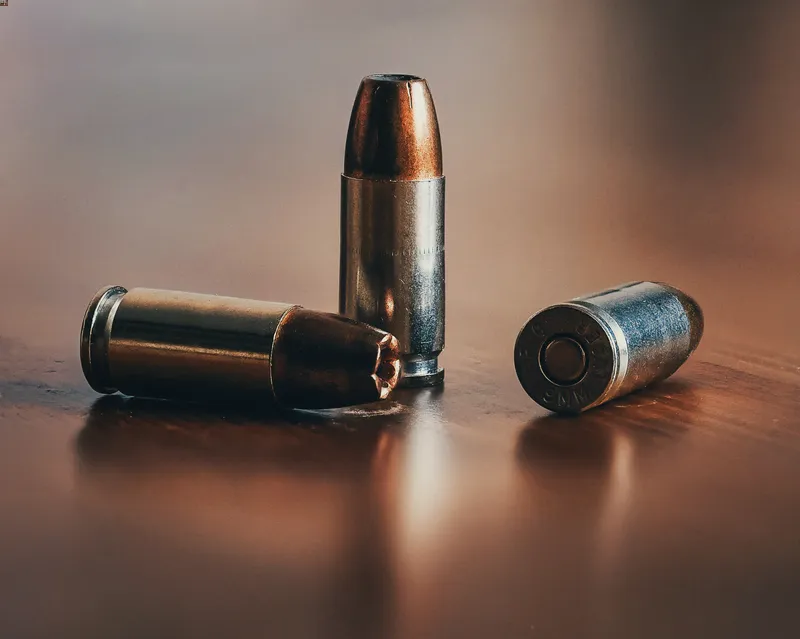The Basic Principles Of Ammunition Pro Llc
The Basic Principles Of Ammunition Pro Llc
Blog Article
What Does Ammunition Pro Llc Do?
Table of ContentsAmmunition Pro Llc Fundamentals ExplainedHow Ammunition Pro Llc can Save You Time, Stress, and Money.Ammunition Pro Llc Can Be Fun For AnyoneAmmunition Pro Llc Things To Know Before You BuyAmmunition Pro Llc Can Be Fun For Everyone
The standard parts of ammunition coincide for rifle, handgun, and shotgun ammunition. Recognizing exactly how ammo functions is a crucial element in being an accountable weapon proprietor. Today we're considering the what the basic parts of ammo are and just how they work with each other to fire a round. The standard parts of ammunition shown on a 9mm. Firearm Ammunition round.It houses the primer and powder. The bullet is seated in the open end of the case. When you fire a bullet out of a semi-auto weapon, the gun's extractor lifts the situation from the firing chamber and it flies out of the gun. The case is likewise sometimes described as coverings, brass, or housings.
A weapon's shooting pin strikes a cartridge's primer. The guide is a metal cup that holds an explosive chemical compound. When the shooting pin strikes the primer cap, it crushes the priming substance versus the anvil. This develops a little explosion in the instance that fires up the propellant. The primer is located in the rim of the case of a rimfire cartridge.
Get This Report about Ammunition Pro Llc
Gunpowder following to the instance that typically contains it. It is normally a mix of saltpeter, charcoal, and sulfur.

We call the projectiles for shotshells, which we discharge through shotguns, slugs and shot. Now that you have a basic understanding of the fundamental parts of ammo, you can really feel a little bit much more positive in exactly how your weapon and ammo feature!.
Ammunition Pro Llc Can Be Fun For Anyone
Keep up with Special Offers, Advancement Notice of Sales, and Store Occasions
Fun truth: Grains are made use of to explain the mass of a bullet because right back in the very early days of weapons, it was an apothecary's unit of measurement, and a common denominator was required to figure out just how much lead to use to make actors lead bullets (Ammo Retailer). 'Grains' as an unit of measure for weight goes all the method back to ancient times, and represents the weight of a grain of wheat

(https://www.inkitt.com/ammunitiondde)For recommendation, the weight of a paper clip is about 16 gr. We recognize that grains are a measure of mass, and more = larger, and heavy is excellent? Yes, hefty is great, yet mass of the projectile isn't the only point you need to think about when choosing a round for your firearm.
The Ultimate Guide To Ammunition Pro Llc
This spin is developed by grooves reduced or inculcated the interior of the barrel, which are described as 'rifling'. Enjoyable truth, this is the origin of the term "Rifle" ex-spouse. A gunned musket vs. smoothbore firearm. The effect this spin carries projectiles is a supporting one the bullet rotating maintains the nose pointed right, similarly that a completely spiraled football throw is going to be much extra stable and accurate in flight than an ugly duck, end over end toss.
How does this associate to grain weight? Visualize you're on one of those playground carousels, the ones with bars you hold on to while it rotates.
The very same effect happens with bullets. The heavier the projectile, the more impact a quicker rotate will certainly have on it.
Our Ammunition Pro Llc Diaries
There's another variable that we have to consider when selecting a grain weight for our ammunition. As hinted at above, bullet velocity, or the speed of the projectile, is a significant factor when figuring out the finest grain weight projectile to utilize. Velocity is influenced by a few major aspects, consisting of the kind and amount of propellant (gunpowder), barrel length, and bullet weight.

One of the most common grain weight rounds for 9x19mm cartridges are 115gr and 124gr. These are typically lead core, totally jacketed (FMJ) rounds. Both of these grain weight cartridges will do well in manufacturing facility 9mm hand guns, to regular handgun distances (as much as 50 yards). 115 grain rounds are the most usual (and as a result least costly).
Report this page